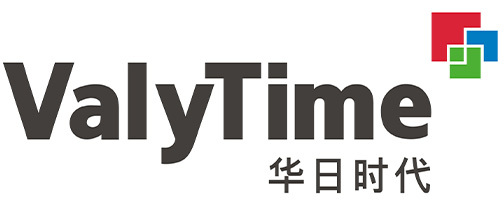LED Lighting Downlights Vs. LED Spotlights: Are They the Same?
In the rapid development of modern lighting technology, LED (light-emitting diode) technology has become the mainstream of the global lighting industry. As an energy-saving, environmentally friendly and efficient lighting solution, LED products have been widely used in various lighting environments. Among the many LED lighting devices, LED Lighting Downlights and LED Spotlights are the two most common types.
For many consumers and lighting designers, understanding the differences between LED lighting downlights and LED spotlights and choosing according to specific needs is the key to ensuring that the lighting effect matches the space requirements.
This article will analyze the various aspects of LED lighting downlights and LED spotlights in detail to help readers better understand the differences between them and further clarify how to choose according to actual needs.
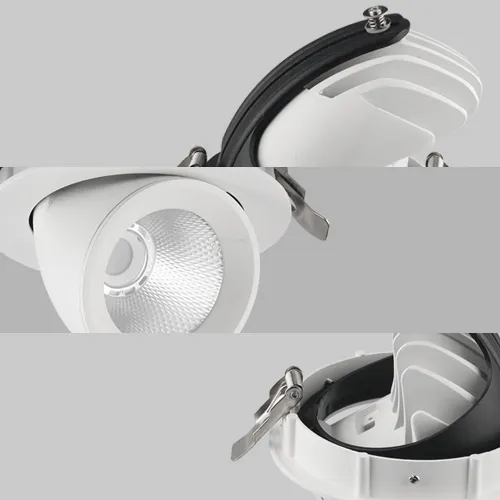
What is LED lighting downlight?
LED lighting downlights are a type of lighting device with an embedded design, commonly found in ceilings or walls. It usually adopts a round or square lamp shape and provides uniform lighting through a built-in LED light source. Downlights have a softer, wider beam, and are mainly used for wide-area lighting and background lighting. The outer shell of LED downlights is generally made of aluminum alloy or plastic material, and the design is simple and low-key, which can be integrated with various decoration styles.
LED downlights are usually moderate in brightness and are suitable for large-area indoor lighting, especially on the ceilings of shopping malls, office buildings, hotels, residences and other places. Its wide range of illumination can provide uniform lighting effects for the entire space.
What is an LED spotlight?
Unlike LED downlights, LED spotlights are a type of lighting equipment used for local lighting that can focus light to produce a more concentrated and directional beam. LED spotlights are usually used to emphasize the lighting needs of specific areas, objects or devices. Its beam angle is small and the brightness is high, which can provide precise and concentrated lighting effects for a specific area. LED spotlights are generally equipped with optical lenses or reflectors to adjust the direction and angle of the beam.
LED spotlights are widely used in places such as art displays, billboard lighting, store displays, museums, etc. where specific objects or areas need to be highlighted. Due to their precise beams, LED spotlights not only provide strong localized lighting, but also effectively draw the audience's attention and highlight the details of the illuminated object.
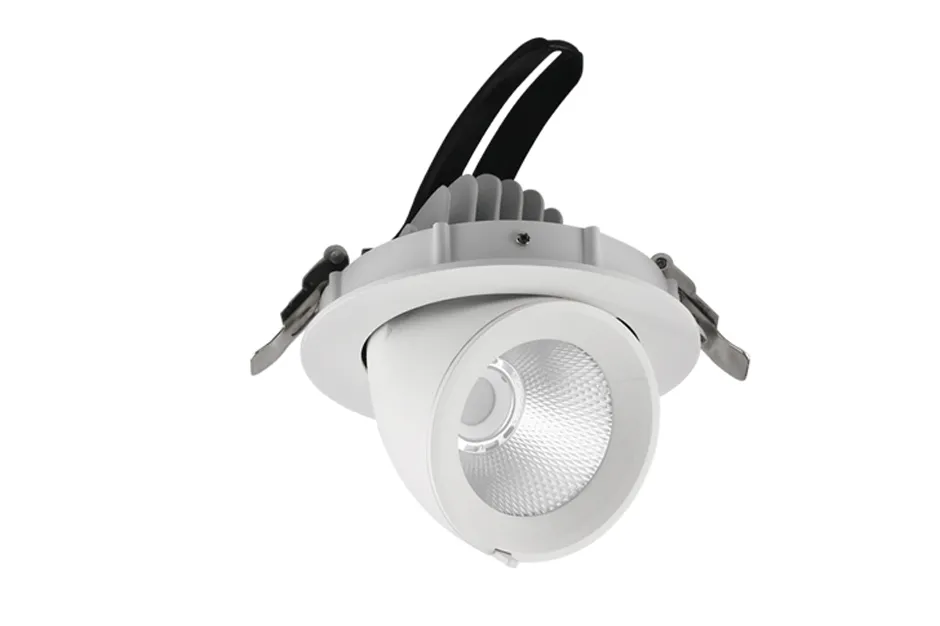
LED downlights Vs. LED spotlights: What's the difference?
Although both LED downlights and LED spotlights use LED technology in terms of light source type, there are many significant differences between the two in terms of design, function, and application scenarios. Here are a few key dimensions for a comprehensive comparison of the two lamps:
1. Beam angle
LED downlights usually have a larger beam angle, usually between 60° and 120°. This means that they have a wider range of illumination, can illuminate larger areas, and provide uniform light distribution. The design of downlights makes the light more dispersed in space, suitable for environments that require softer lighting.
In contrast, LED spotlights have a smaller beam angle, usually between 15° and 45°, and focus on concentrating the light on a specific area or object. The light of spotlights is usually more concentrated, making them suitable for highlighting and emphasizing local areas or objects. Its design makes the focusing effect of light more precise, which can create strong contrast and visual focus.
2. Lighting effect
LED downlights usually have a more uniform and soft lighting effect, suitable for providing extensive and uniform indoor lighting. Due to its large beam angle, downlights can provide comfortable lighting and avoid dazzling direct light, so they are very suitable for spaces that require basic lighting, such as homes, offices, and shops.
LED spotlights, on the other hand, have a more focused lighting effect, and can highlight a specific area or object through precise beam control. Because of its concentrated beam, the brightness is usually high, which can create a local highlight effect, so it is often used in scenes that need to emphasize details, such as art exhibitions, commodity displays, and stage lighting.
3. Application scenarios
LED downlights are widely used in spaces that require overall uniform lighting, such as home ceilings, offices, shopping malls, and restaurants. In these places, LED downlights can provide more comfortable, shadow-free light to meet daily lighting needs. They can be embedded in the ceiling or wall, blending into the environment and maintaining the simplicity of the space.
In contrast, LED spotlights are mainly used in environments that require local lighting, emphasis, or decorative lighting. Common application scenarios include museums, galleries, shop windows, billboard lighting, building facades, etc. In these places, LED spotlights can highlight a specific object or area and effectively attract attention through their strong and concentrated beams.
4. Installation method
LED lighting downlights usually adopt an embedded design and are installed in the ceiling or wall. The overall appearance is simple and not easy to detect, and can be perfectly integrated with the interior decoration. Downlights can be installed directly embedded or mounted on the surface through a fixed bracket to provide different decorative effects.
LED spotlights are mostly suspended or track-type designs, which are commonly found hanging on the ceiling or installed through a track light system. Its installation position and direction are relatively flexible, and the irradiation angle of the beam can be adjusted as needed to ensure the accuracy of the lighting effect. Due to its centralized lighting characteristics, LED spotlights often require independent installation locations to avoid interference with other light sources.
5. Power and brightness
LED lighting downlights usually have low power and are suitable for providing basic lighting functions. Their brightness is also relatively moderate and can evenly illuminate a large area. The power of common LED downlights is between 6W and 30W, which is suitable for a wide range of indoor environments. Since the light is more dispersed, the brightness of LED downlights is generally not too high, which can ensure a comfortable lighting experience.
LED spotlights have higher power and brightness, can focus a lot of light and produce strong lighting effects. Its power range is generally above 10W to 50W, suitable for occasions that require high brightness and concentrated lighting. Due to the highly concentrated nature of the spotlight beam, its brightness is usually higher than that of the downlight to ensure that specific areas or objects can be effectively highlighted.
6. Light color and light quality
LED lighting downlights usually provide a variety of color temperature options such as warm white light, neutral white light or cool white light, which can adapt to different environmental atmosphere requirements. In home lighting, warm white light is the most common because it can create a warm and comfortable living atmosphere. The light quality of LED downlights is usually more uniform, without obvious shadows or light spots, and is suitable for large-scale background lighting.
LED spotlights are usually used in occasions with strong lighting effects, so their light color and light quality pay more attention to highlighting the effect. The light source of a spotlight usually has a high color saturation, which can provide more vivid lighting for the display object. The light of a spotlight is more concentrated, and the shadow effect and contrast produced are larger, which is suitable for emphasizing the lighting of a certain object or area.
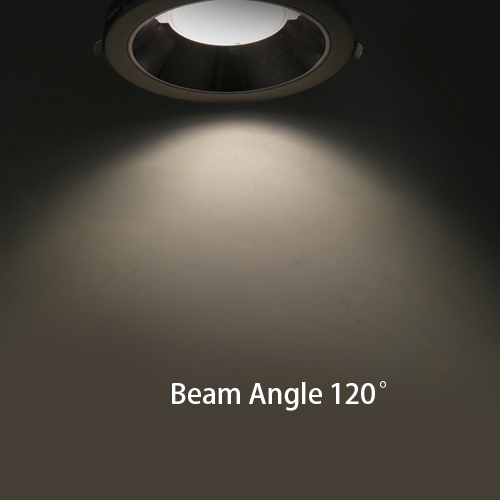
How to choose LED downlights and LED spotlights?
When choosing LED downlights and LED spotlights, it mainly depends on the lighting needs and scene requirements. The following are selection suggestions:
1. Choose according to space requirements
If you need to provide uniform and soft basic lighting for the entire space, LED downlights are the best choice. It can effectively illuminate large areas without producing strong shadows and light spots, which is very suitable for home, office, commercial and other spaces.
2. Choose according to the focusing effect
If the lighting needs require highlighting a specific area, object or artwork, LED spotlights are more suitable. Its strong and concentrated beam can highlight specific objects, which is suitable for environments that require local emphasis, such as store displays, museum displays, and advertising lighting.
3. Choose according to the installation location
When considering the installation method, the embedded design of LED downlights is suitable for places where you don’t want the lighting equipment to become the visual focus of the space, while the hanging or track design of LED spotlights is suitable for applications that require flexible adjustment of the light direction.
4. Choose according to brightness requirements
Where strong lighting effects are required, choosing LED spotlights can ensure the accuracy and brightness of lighting; while for environments that require softer and more uniform lighting, LED downlights are more suitable.
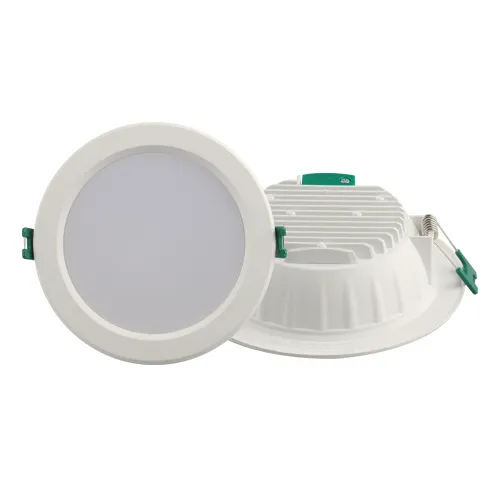
What makes your LED lighting products competitive in the market?
Our products stand out due to their high quality, attractive pricing, and modern designs. As a manufacturer, we control every aspect of the production process, allowing us to offer low prices without sacrificing performance.
With certifications such as CE and RoHS, customers can trust the reliability of our LED lighting. We support customization, branding, and timely delivery—all from our factory in China.
